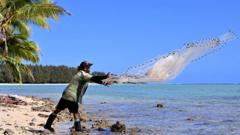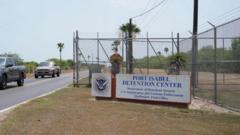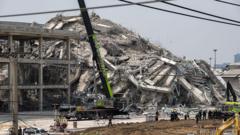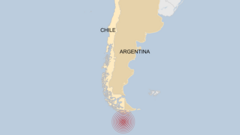**A recent quake in Myanmar underscores the need for travelers to adopt safety measures in active seismic zones.**
**How to Stay Safe While Traveling in Earthquake-Prone Areas**

**How to Stay Safe While Traveling in Earthquake-Prone Areas**
**As seismic threats loom over popular destinations, preparedness becomes vital.**
Many sought-after travel spots, including California, Italy, Japan, Mexico, and the Caribbean, are situated in regions that experience frequent earthquakes. Following a significant 7.7-magnitude quake that struck central Myanmar on March 28, resulting in over 3,500 casualties, it’s essential for travelers to know how to protect themselves while visiting these high-risk locales.
The unpredictable nature of earthquakes makes it crucial to research potential destinations prior to travel. Check online to ascertain if your intended area has a history of significant seismic activity. Understanding which local organizations provide guidance during emergencies can be lifesaving. Be informed about whether the destination boasts an earthquake early warning system, which utilizes networks of sensors to detect seismic activity, giving locals and tourists precious seconds to take cover.
“Seconds count during an earthquake,” stated Sara McBride, a scientist at the U.S. Geological Survey. A recent example involved a warning system in Taiwan that enabled nurses to safeguard newborns in a maternity ward during a 7.4-magnitude earthquake.
To enhance your personal safety, consider downloading apps like SASSLA for Mexico, SafetyTips or NERV for Japan, and MyShake in the United States. These applications can send timely alerts to your phone regarding seismic events. Lastly, register with the State Department’s Smart Traveler Enrollment Program and share your travel itinerary with trusted family or friends, as earthquakes can disrupt communication systems.
Being proactive about earthquake safety can significantly increase your chances of staying safe while enjoying your travels.
The unpredictable nature of earthquakes makes it crucial to research potential destinations prior to travel. Check online to ascertain if your intended area has a history of significant seismic activity. Understanding which local organizations provide guidance during emergencies can be lifesaving. Be informed about whether the destination boasts an earthquake early warning system, which utilizes networks of sensors to detect seismic activity, giving locals and tourists precious seconds to take cover.
“Seconds count during an earthquake,” stated Sara McBride, a scientist at the U.S. Geological Survey. A recent example involved a warning system in Taiwan that enabled nurses to safeguard newborns in a maternity ward during a 7.4-magnitude earthquake.
To enhance your personal safety, consider downloading apps like SASSLA for Mexico, SafetyTips or NERV for Japan, and MyShake in the United States. These applications can send timely alerts to your phone regarding seismic events. Lastly, register with the State Department’s Smart Traveler Enrollment Program and share your travel itinerary with trusted family or friends, as earthquakes can disrupt communication systems.
Being proactive about earthquake safety can significantly increase your chances of staying safe while enjoying your travels.




















